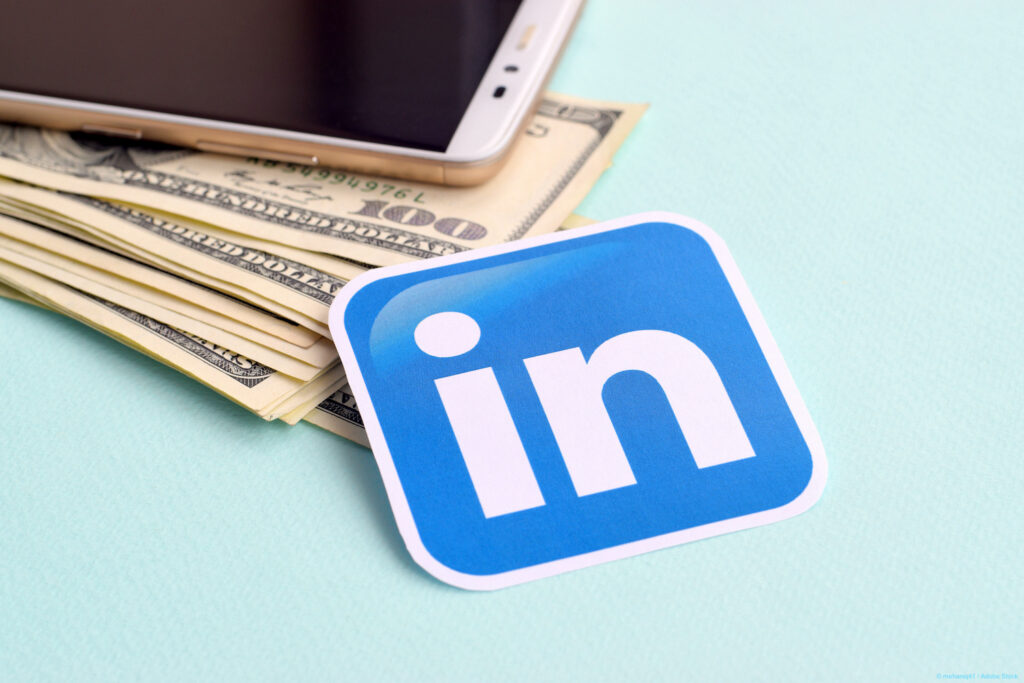While LinkedIn advertising can be costlier than other platforms, the results can be substantial. For instance, LinkedIn is 277 percent more effective than either Facebook or Twitter for lead generation.
In fact, with 80 percent of online B2B leads coming from LinkedIn, it makes sense for companies to allocate a portion of their ad dollars to it.
LinkedIn Ad Types—The Basics
While there are numerous vehicles for advertising on LinkedIn, if you’re just starting out here are three basic ad types to consider:
- Sponsored content is a collection of ad formats that fit natively into users’ newsfeeds. These paid advertisements go beyond your current LinkedIn network to reach the newsfeeds of the users you target (more on that later).
- Sponsored InMail messages go to the inboxes of targeted LinkedIn users. The thought here is that while a user could miss your sponsored content in their newsfeed, they may open the content you send them directly via InMail.
- Lead Gen Ads are like sponsored content but with the addition of forms that your targets can fill out, enabling you to collect information more seamlessly. For example, while a sponsored ad might drive traffic to a landing page or website, lead-gen ads let you collect the same information directly within the LinkedIn newsfeed.
Of course, there are specifications that must be adhered to for each ad type including dimensions, image quality, subject matter, etc. LinkedIn’s ad manager will help to ensure you stay within the defined parameters as you set up your ad.
Determine Your Ad’s Objective and Frequency
First, consider what the objectives for your ad campaign are—in other words, what you hope to achieve. Knowing this can often lead you to choose a specific ad type. For instance:
- Do you want to drive website or landing-page traffic?
- Are you advertising a job opening just to qualified prospects?
- Do you want to build brand awareness or thought leadership?
- Are you collecting data for lead generation?
Also, what frequency works best? Except for sponsored InMail messages, which can quickly get “spammy,” we generally recommend a campaign of four ads minimum to ensure reach. You should also conduct testing on your ads to determine which perform best and then make modifications to future ads accordingly.
Targeting and Expanding Your Audience
LinkedIn offers robust targeting to help identify and grow audiences for your ad based on industry, job title, geographic region, and more.
For example, LinkedIn’s “lookalike” algorithms build upon your original LinkedIn network based on similar characteristics. Use this capability, as audiences can be up to 15 times larger than your original audience size.
How Is Cost Determined?
While costs for LinkedIn ads are determined using a bidding process based on how much you’re willing to pay, the platform also factors in the ad’s relevancy to target audiences. This is another reason to spend some extra time to ensure your ad provides value and is of high quality.
The ads that win auctions on LinkedIn (and thus make it into the newsfeed or inbox) are those with both a strong relevancy score and an acceptable bid.
You can learn more about the bidding process here.
As a yardstick, first-time advertisers should expect to spend at minimum $500 to $1,000 per audience per month. Our recommendation is to get the lay of the land by starting out on the lower end of the cost spectrum, testing ads frequently, and then progressing to larger, costlier campaigns as ROI is realized.
As noted previously, LinkedIn advertising can cost more compared to other platforms, but the results are typically worth it. More than 43 percent of marketers have sourced at least one customer from LinkedIn.
If you need assistance planning and executing a LinkedIn campaign, contact us today. We’ve helped countless companies like yours gain real results from their advertising.

